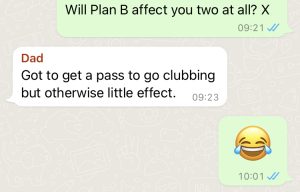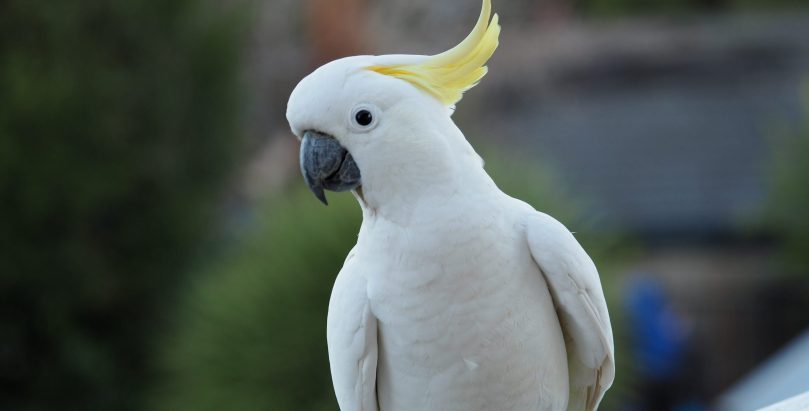“Hi, it’s Carol here and I’m ringing because we’ve got a parrot due to be delivered to you tomorrow.”
“Er, sorry, I think you’ve got the wrong number.”
Carol checks the name and address on her instructions (they are mine) and confirms “Yes, that’s what we have. I just wanted to check you would be in when we deliver the parrot tomorrow.”
“I’m afraid I haven’t ordered a parrot. I think there’s been a mistake.”
“Oh”
“It looks like it’s from *garden furniture company*”
Penny drops
“Ah. A pallet?”
“Yes, a pallet. It’s been passed to us to deliver it tomorrow. Is that OK?”
Carol patiently waited while I stopped laughing. Apparently, I wasn’t the first person to misunderstand in this way. We finalised the arrangements, I thanked her and wished her a lovely day because her call had made my mine.
It’s quite rare for me to laugh out loud.
I smile quite a lot, I use the “crying laughing face” emoji and “lol” (don’t judge me) in messages regularly but spontaneous, bubbling, can’t-keep-it-in laughs are few and far between. The warmth and energy I felt after that phone call made me want to change that.
Laughing is a bit like yawning. It’s contagious. There’s something deeply programmed within us which responds to laughter; see any one of those viral posts of babies giggling and you can’t help but smile.
Apparently there are two types of laughter. One is spontaneous, emotional, impulsive and involuntary and expresses joy and amusement; the other is more about our societal expectations, for instance in ordinary conversations or social situations even if we don’t find them particularly funny.
Even better, spontaneous, involuntary laughter can strengthen your immune system, boost your mood and reduce pain. And, let’s face it, we could all do with some of that right now.
The good news is, as with many things, when we become more aware of something, we open up opportunities for change.
For me, this has meant noticing what raises a smile or a bubble of laughter and going with it; allowing it to flow. I’ve been sharing things I find funny with others (like my Dad’s response to Plan B below) and noticing how the echo of the original laugh feels good too. I’ve also been thinking about what it means to laugh at myself (something I find quite hard but I working on it!)

If this sounds interesting to you, think back to the last time you had a really good laugh. What was it like? Who was there? What did you notice? What happened then?
The next time you smile, chuckle or laugh, take a moment to notice what’s happening. What is your face doing? Your eyes? What else is going on? Where do you feel it? What does it feel like? Does it feel natural and involuntary or are you just being polite? Get curious about what evokes spontaneous joy and amusement. When you notice it, spend a moment with it before you move on to the next thing. Revel in it, savour it, let it flow. The more you become aware of it, the more likely you are to feel its presence.
And, although laughter can be bonding, it doesn’t mean that we all find the same things funny and that’s OK. Just because your friend/partner/colleague finds those falling over clips hilarious and you don’t, doesn’t mean that you don’t have a sense of humour! Get curious about what hits your funny bone and have fun with it!


